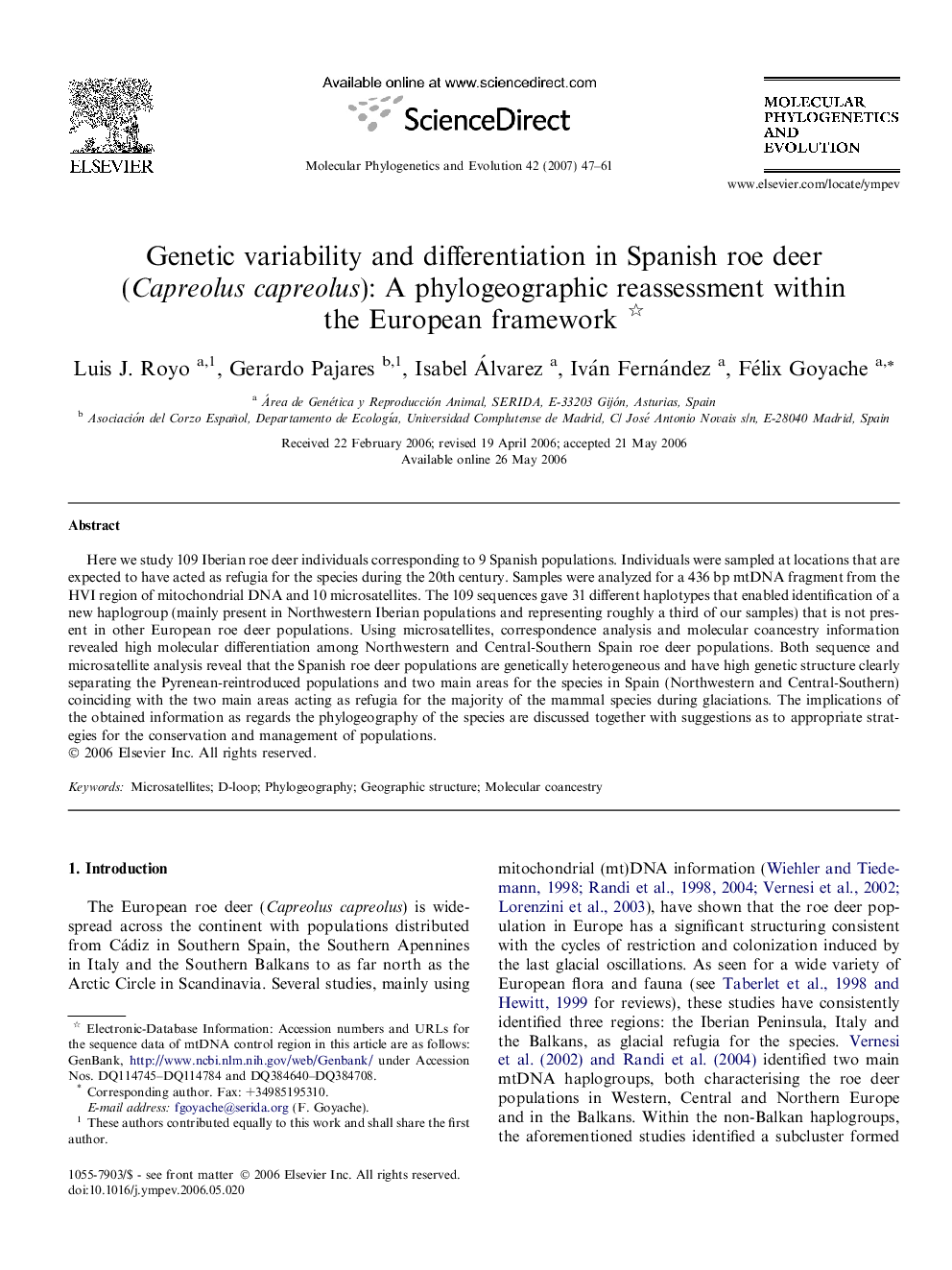| Article ID | Journal | Published Year | Pages | File Type |
|---|---|---|---|---|
| 2835672 | Molecular Phylogenetics and Evolution | 2007 | 15 Pages |
Here we study 109 Iberian roe deer individuals corresponding to 9 Spanish populations. Individuals were sampled at locations that are expected to have acted as refugia for the species during the 20th century. Samples were analyzed for a 436 bp mtDNA fragment from the HVI region of mitochondrial DNA and 10 microsatellites. The 109 sequences gave 31 different haplotypes that enabled identification of a new haplogroup (mainly present in Northwestern Iberian populations and representing roughly a third of our samples) that is not present in other European roe deer populations. Using microsatellites, correspondence analysis and molecular coancestry information revealed high molecular differentiation among Northwestern and Central-Southern Spain roe deer populations. Both sequence and microsatellite analysis reveal that the Spanish roe deer populations are genetically heterogeneous and have high genetic structure clearly separating the Pyrenean-reintroduced populations and two main areas for the species in Spain (Northwestern and Central-Southern) coinciding with the two main areas acting as refugia for the majority of the mammal species during glaciations. The implications of the obtained information as regards the phylogeography of the species are discussed together with suggestions as to appropriate strategies for the conservation and management of populations.
